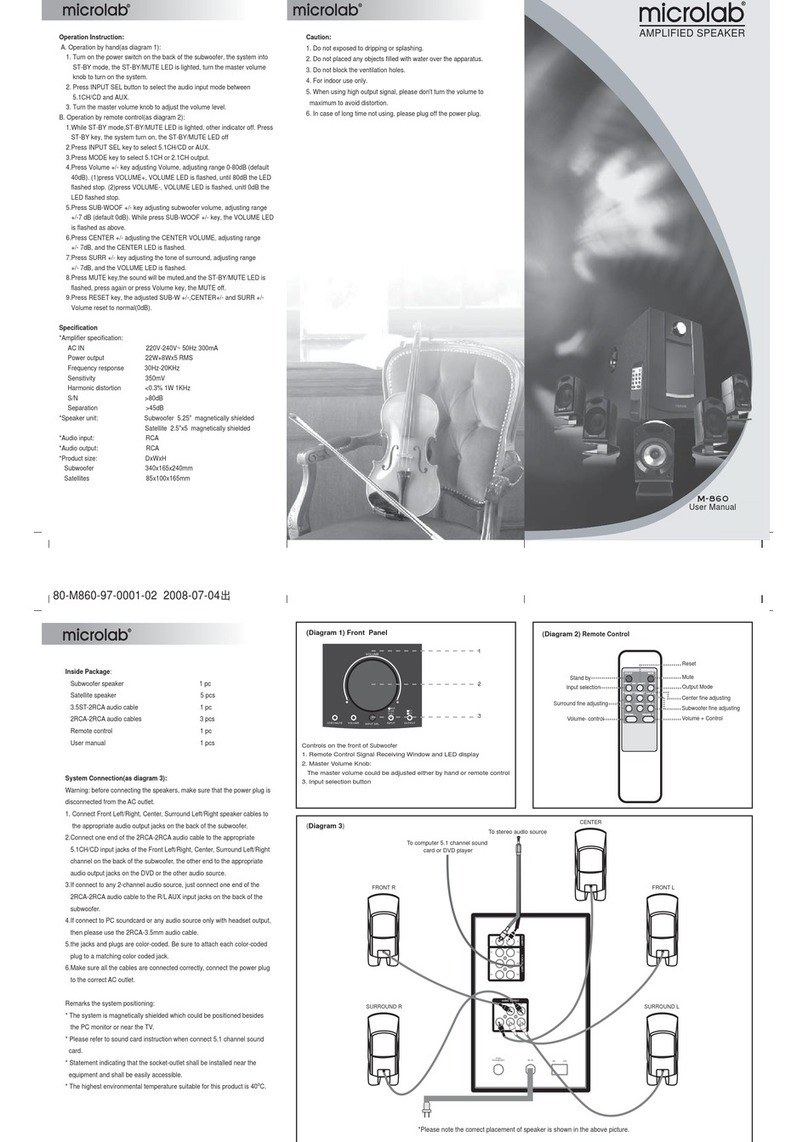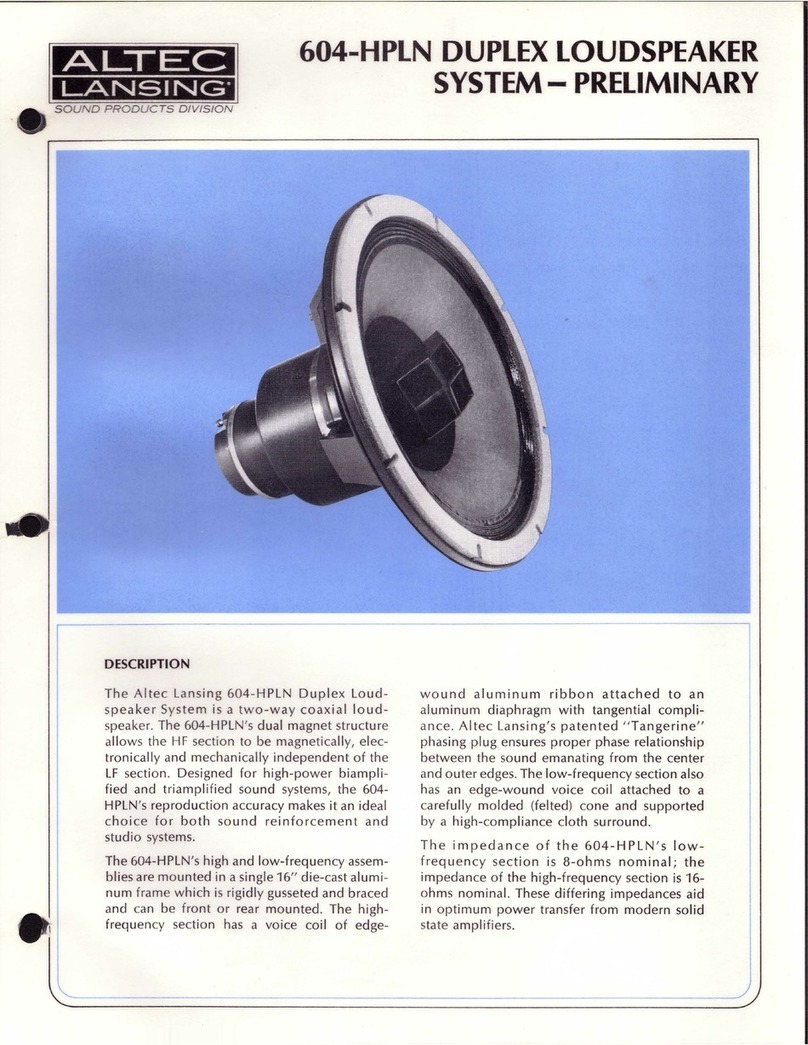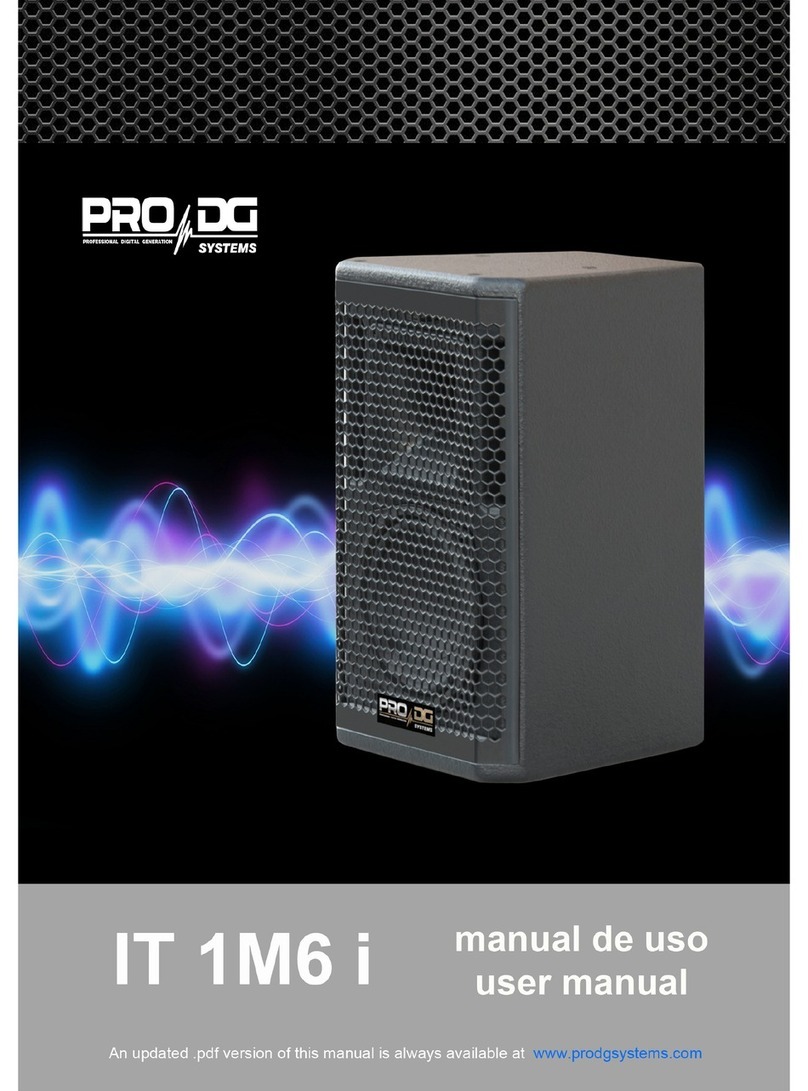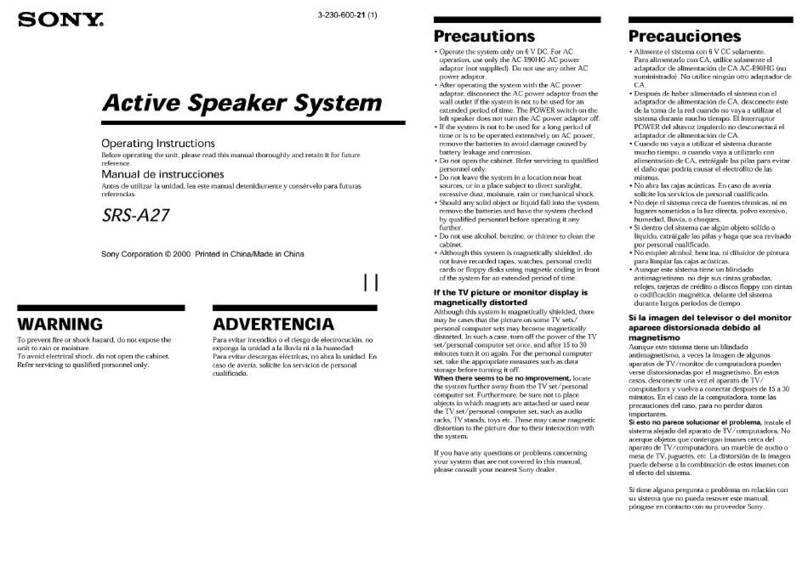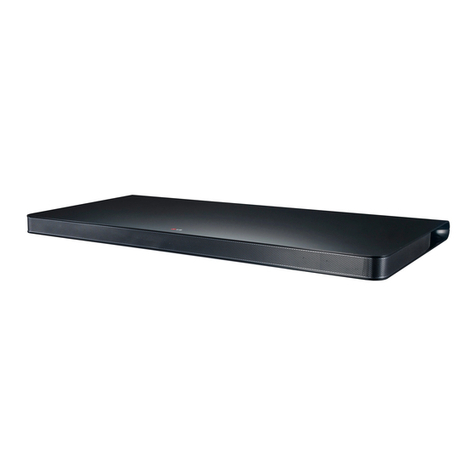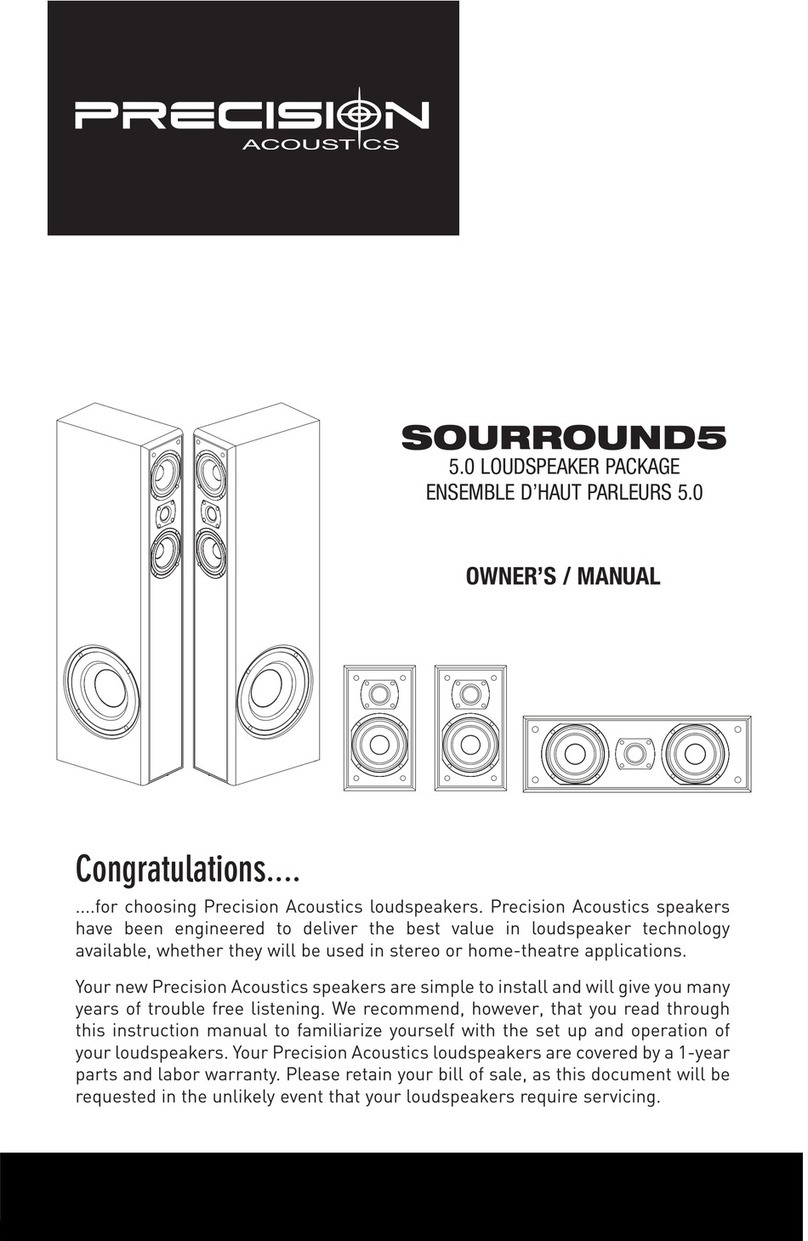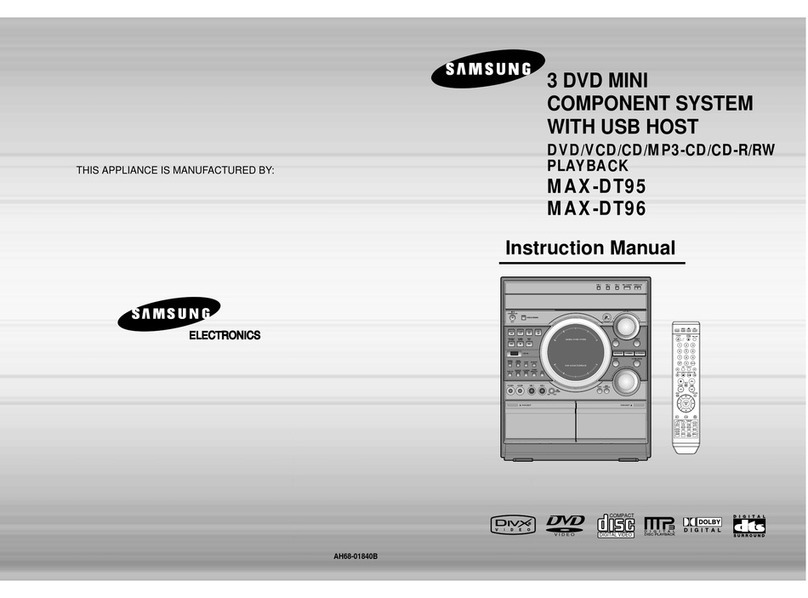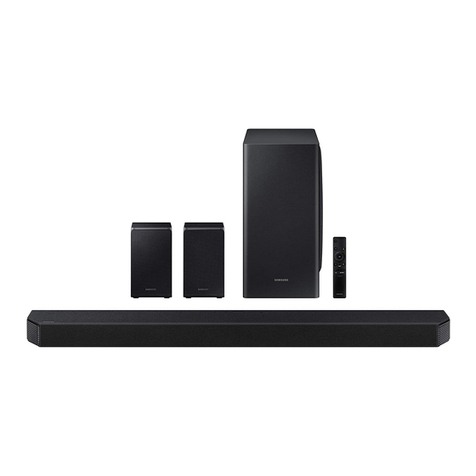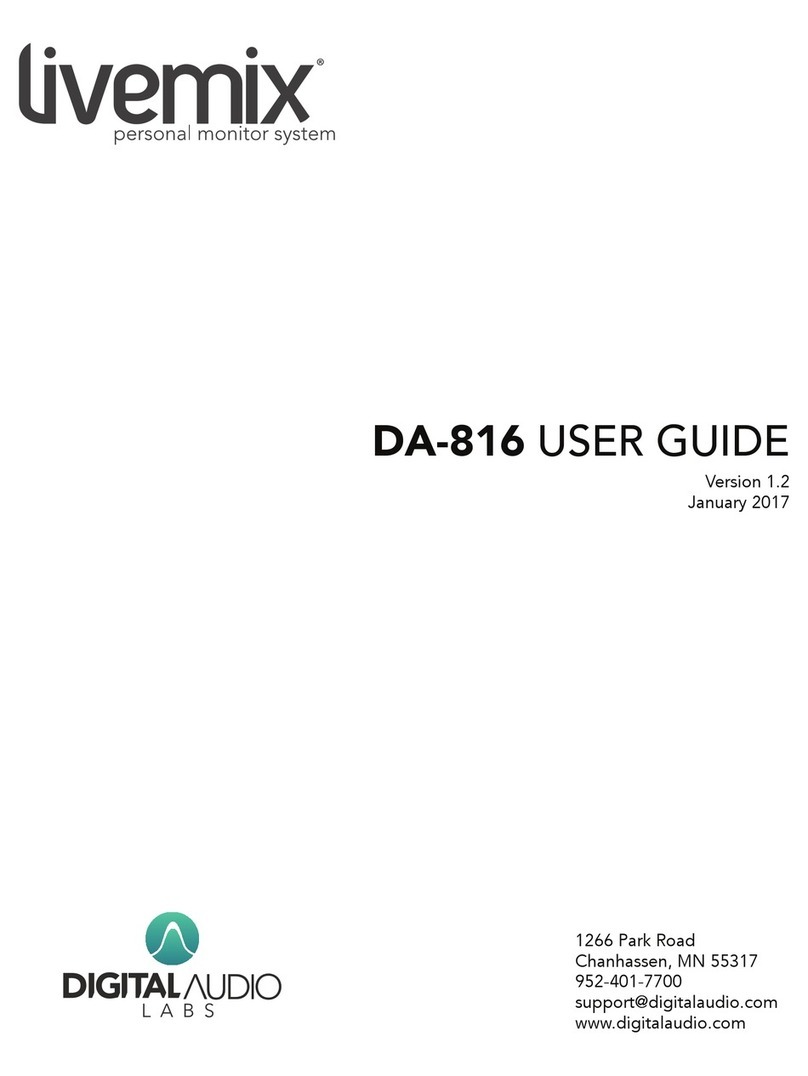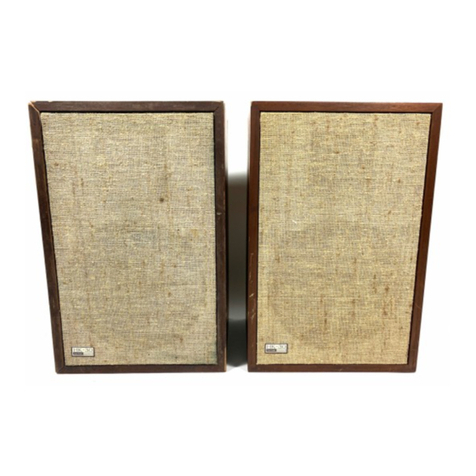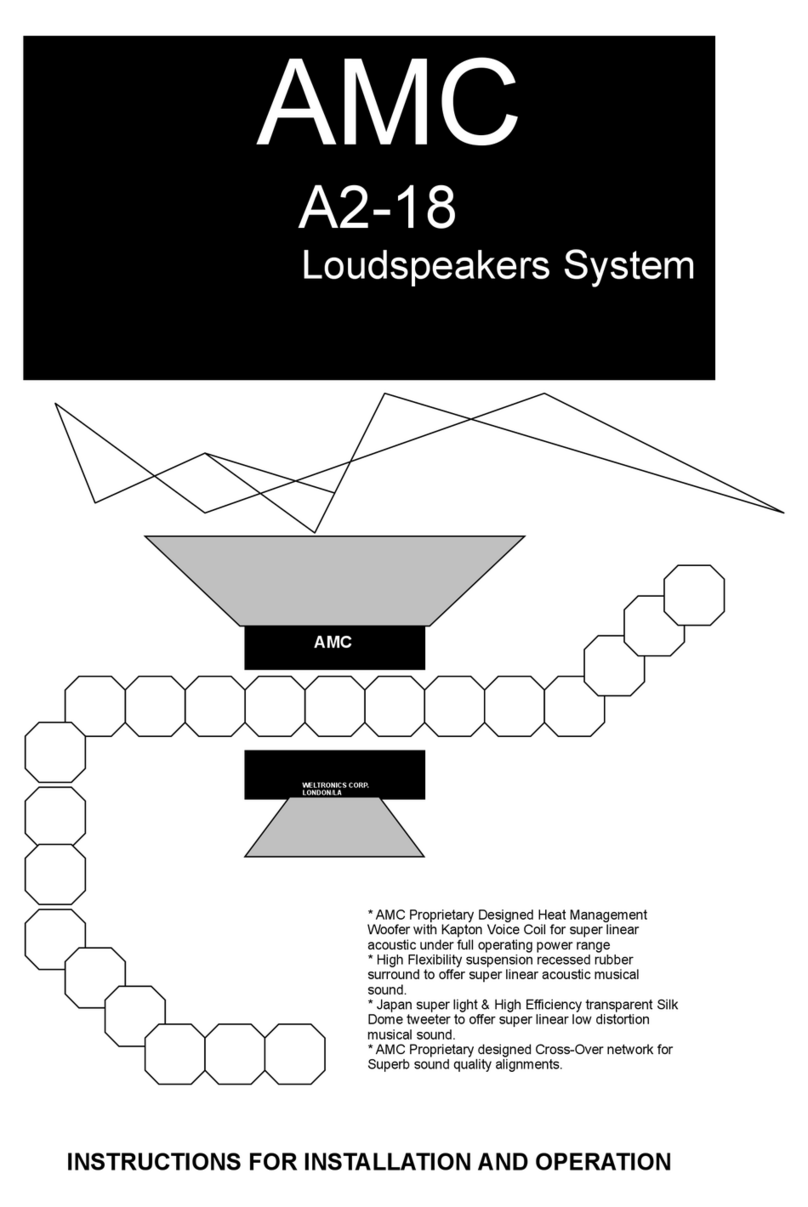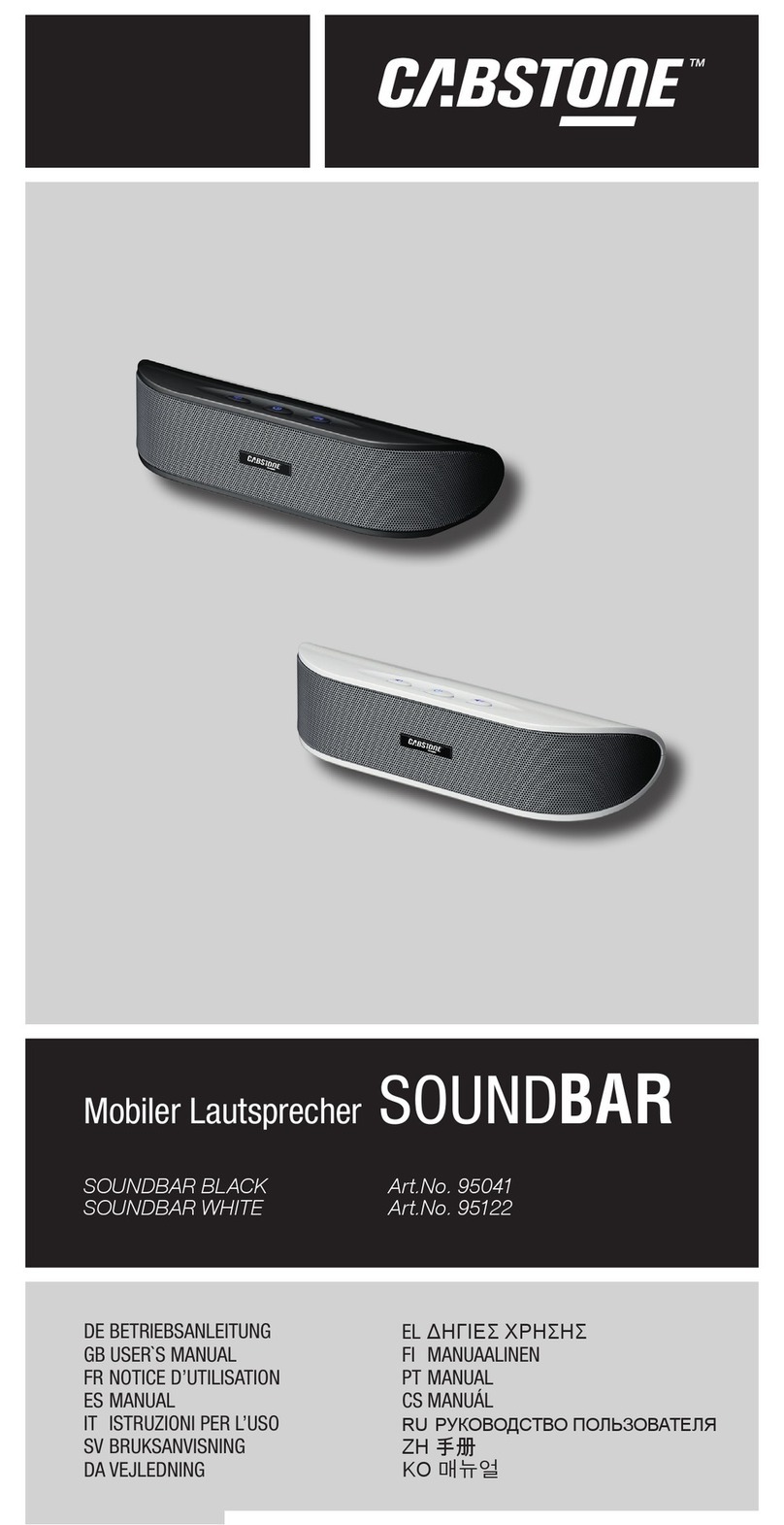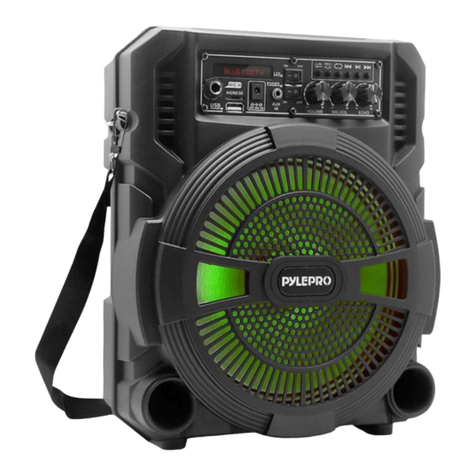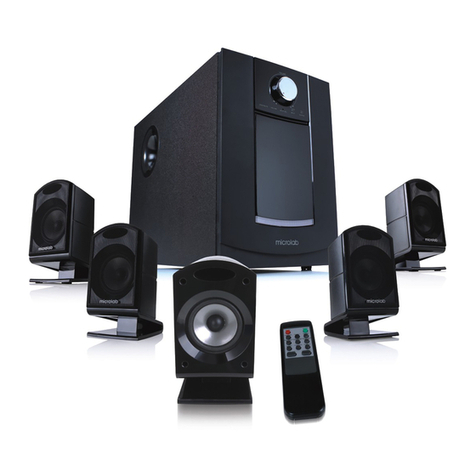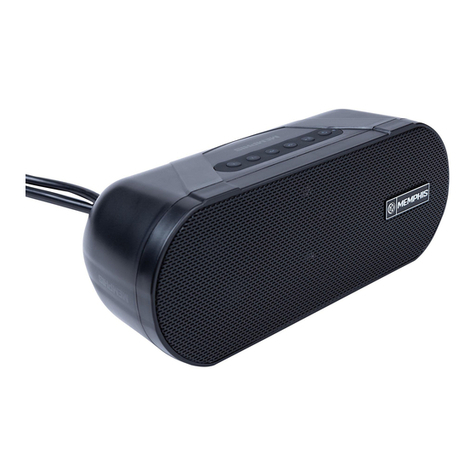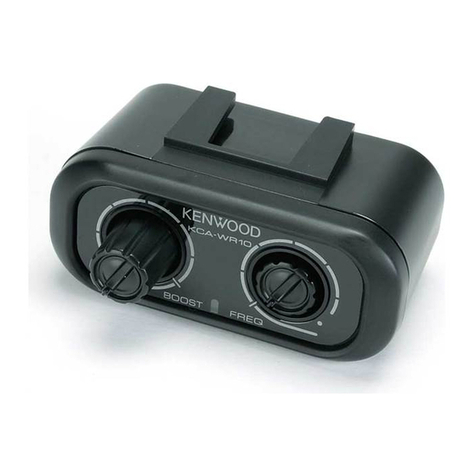Spica TC-50 User manual

SPICA
TC-5()
OWNER"S
MANUAL

We
at
SPICA
would
like
to
thank
you
for
purchasing
the
TC-50
speaker
system.
We've assumed
that
you've
chosen
the
TC-50
because
yOU
love
music
as
we
do.
With
that
in
mind,
we've
attempted
to
Keep
the
technical
wording
in
this
manual
to
an
absolute
minimum
while
stressing
the
musical
benefits
of
having
your
TC-50's
set
up
properly.
The
TC-50's
performance
in your
home
is
dictated
by
three
basic
parameters:
1)
the
speaKers'
electrical
connection
to
your
stereo
system,
2)
the
speaKers'
physical
location
in
relation
to
the
room,
3) and
yourself.
To
obtain
the
full
sonic
benefits
from your
TC-50's,
follow
our
simple
gUidel
ines
for
optimum
set-up.
Among
these
guidelines
are
some
absolute
DO's
and DON'T's;
for
clarity,
these
have been marked
with
a"*
*"
sign.
Other
guidelines
should
be
followed
as
closely
as
possible,
depending
on
your room
geometry.
When
in
doubt,
LISTEN!
Your
ears
will
always
tell
you which
set-up
is
the
best
for
your
room. For your
convenience,
we've
included
descriptions
of
some
of
the
basic
things
to
I
isten
for.
E:LE:CTRICAL
CONNE:CTIONS:
**Hake
sure
that
your
ampl
ifier
or
receiver
is
off
when
making
or
changing
electrical
connections.
Use
high
Qual
ity
wire
to
interconnect
your
amplifier
and
TC-50's.
Your
dealer
can
assist
you in
choosing
the
wire
that's
right
for
your
needs.
Don't
underestimate
the
importance
of your
interconnect
wire;
lower Qual
ity
wire
can
seriously
affect
your
system's
sound Qual
ity.
If
in
doubt,
ask your
dealer
for
a
demonstration
comparing
low Qual
ity
18 gauge "lamp
cord"
type
wire
with
the
dealer's
recommended
wire;
you can
hear
the
difference.
**
Use
the
same
length
of
wire
for
both
speakers,
even
if
they
are
at
different
distances
from your
ampl
ifier.
All
wire,
regardless
of
type,
can
be
classified
by
certain
electrical
characteristics
(resistance,
capacitance,
inductance,
etc.)
To
ensure
proper
sound
balance
and
ident;cal
performance
for
both
speakers,
it's
imperative
that
the
wire's
sonic
(electrical)
contributions
be
the
same
for
each
speaKer.
For
example,
if
one TC-50
is
ten
feet
away from
the
ampl
ifier
and
the
other
is
only
six
feet
away,
use
two
ten-foot
lengths
of
wire.
The
"extra,
unused"
four
feet
of
wire
for
the
speaKer
in
our
example
is
not
really
"extra"
or
"unused";
as
stated
above,
it
serves
the
important
function
of
ensuring
that
both
speaKers
will
have
the
same sound
Qualities.
**
Strip
only
as
much
insulation
from
the
wire
as
is
needed
to
make agood
connection.
'Hore'
is
not
·better".
Strip
just
enough
wire
to
maKe
a
SINGLE
pass
around
the
binding
post
(3/4
of
an
inch
will
do).
- I -

Separate
your
two
wire
leads
by about
four
inches;
use a
knife
or
single
edged
razor
blade
for
this.
If
you
try
to
separate
the
leads
by
force
(i.e.
pull
ing them
apart
by
hand),
yOU
will
most
likely
expose
bare
wire
somewhere
along
the
separation
(HIGHLY
UNDESIRABLE).
Pay
attention
to
color
coding
or
other
markings
on
the
insulation;
such
codings
allow
yoU
to
distinguish
"positive"
and
"negative".
For now,
we
will
connect
the
red
input
of one
TC-SO
with
the
red
(positive)
output
terminal
on
your
amplifier,
using
the
wire's
insulation
coding
as
our
guide.
After
that,
the
black
input
on
the
TC-SO
will
be
connected
to
the
black
(negative)
output
from
that
SAME
CHANNEL
of
your
amplifier.
We'll
then
repeat
the
process
for
the
other
speaker.
Choose a
lead
from the
wire
to
be
the
"+"
(positive)
lead;
with
high
quality
wire,
the
difference
in
leads
is
only
the
external
marking.
Separate
and
strip
the
leads
now,
if
you
haven't
already
done
so.
Turn
the
red
knob
on
the
TC-SO
counterclockwise
to
expose a
metal
post.
Bring
the
"+"
lead
up
to
the
post's
LEFT
SIDE, and wrap
it
ONCE
around the metal
post.
(Hobbiests
have found
that
pre-forming
the
bare
wire
into
a
"hook",
or
upsidedown
"U"
shape
helps
in
installation,
especially
if
a
very
rigid
wire
is
being
used.
To
do
this,
simply
wrap your exposed
lead
halfway
around
the
shank
of a
plain
screwdriver.)
Now
that
the
wire
is
around
the
metal
post,
tighten
the
plastic
insulating
knob by
turning
clockwise;
make
this
connection
as
tight
as
yoU
can
by
hand.
NEVER
USE
PLIERS
OR
ANY
TOOLS
TO
TIGHTEN
A
BINDING
POST.
If
you
followed
directions,
and
brought
the
lead
up
from
the
left
side,
you'll
find
that
the
tightening
action
pulls
the
lead
closer
and
tighter
against
the
metal
post.
Repeat
the
process
for
the
black
("-")
input
on
the
TC-SO.
Ignore
the
tiny
hole
that
passes
through
the
center
of the metal
post;
it's
used
to
connect
laboratory
probe
tips,
etc'l
to
the
binding
post.
The
TC-SO
will
easily
accept
adual banana
plug
if
necessary.
**
DO
NOT
ALLOW
BARE
WIRE
FROM
ONE
INPUT
TO
TOUCH
THE
OTHER
INPUT
OR
ITS
BARE
WIRE
LEAD.
Failure
to
follow
this
directive
will
probably
result
in
serious
damage
to
your
amp
I
ifier.
* * Follow the
amplifier
manufacturer's
instructions
regarding
speaker
wire
connection
to
the
ampl
ifier.
* *
Make
sure
that
the the
ampl
ifier
"+"
output
fr~~
each channel
is
connected
to
the
red
input
on
each TC-SO.
(This
will
be
discussed
in
detail
in a
following
section.)
If
one
amp
I
ifier
channel's
"+"
output
is
connected
to
the
red
speaker
input,
and
the
other
channel's
"+"
output
is
connected
to
the
other
sp
aKer's
black
input,
then your system
will
be
OUT-OF-PHASE.
This
will
result
in
near
total
loss
of
bass
energy,
and
total
loss
of
the
"stereo
image"
(detailed
below).
DOUble,
triple,
or
quadruple
check
connections
until
yOU
are
CERTAIN
that
your system
is
in-phase.
- 2 -

SPEAKER
PLACEMENT:
Your
room
playS
an
important
role;
in
fact,
we
tend
to
think
of your
room
as
one of your
stereo
components!
Proper
speaker
placement in the
room
provides
very
natural,
very
pleasing,
very
"musical"
sound. Improper
speaker
placement
can
cause
your
system
to
sound
VERY
unnatural,
VERY
unpleasant,
and
VERY,
VERY
non-musical.
Before
proceeding,
we
strongly
advise
yOU
to
get
out
your
tape
measure
or
yardstick
(meterstick);
it
may
also
help
to
have the
assistance
of
a
friend
who
cares
as
much
about
good music
as
yOU
do.
The
first
step
is
to
decide
where, in
general,
yOU
want the
speakers
to
go.
For
some
people,
this
is
dictated
by
existing
interior
decoration;
for
others,
it
~ay
be
necessary
to
set
up
around
existing
room
characteristics,
such
as
fireplaces,
door
locations,
etc.
The
1
ist
of
special
considerations
for
speaker
placement
is
nearly
endless;
however,
as
we
said
earlier,
the
choice
is
yours.
Rather
than
suggest
speaker
placement
with
1
ittle
drawings
of
perfect
rooms
(which
none
of us have
ever
seen),
we've
outl
ined
some
absolute
rules
which
are
easy
to
follow
and
easy
to
understand.
These
rules
are
based
on
the
TC-50's
design
and the
physical
laws
governing
acoustics.
* *
Do
not
place
speakers
on
opposite
sides
of aroom,
facing
each
other.
* *
Place
the
pair
of
speakers
as
symmetrically
as
possible.
If
room
geometry
allows,
place
the
speakers
symmetrically
along
one
wall.
In
other
words,
the
distance
from
the
"left"
wall
to
the
"left"
speaker
should
be
the
same
distance
as
the
"right"
speaker
to
the
"right"
wall.
Also,
the
distance
from
the
rear
wall
(behind
the
speakers)
should
be
the
same
for
each
speaker,
and
the
speakers
should
both
be
at
the
same
height
above
the
floor.
This
symmetrical
placement
will
ensure
that
the
room's
effect
will
be
the
same
for
both
speakers.
* * Each
speaker,
relative
to
nearby
room
surfaces,
should
be
placed
ASSYMMETRlCALLY.
For example,
if
the
speakers
are
on
27
inch high
stands,
then
the
distance
to
the
rear
wall
should
be
OTHER
than
27
inches
(i
.e.
24
inches).
The
distance
to
the
side
wall
should
also
be
unique.
Following
our
example,
the
distance
to
the
side
wall
should
be
other
than
27"
or
24",
i.e.
36
inches.
These
distances
are,
of
course,
just
used
for
illustration.
The
actual
distances
for
your
speakers
will
be
governed
by
your
set-up
in your room.
This
assymmetrical
placement
helps
ensure
proper
tonal
balance.
With
assymmetrical
placement,
sound
reflected
from
the
rear
and
side
walls
(and
the
floor)
will
reach
your
ears
at
different
times.
(If
several
reflected
sounds
arrive
at
your
ears
at
the
same
time,
severe
cancellation/reinforcement
will
occur,
causing
some
frequencies
("pure
tones")
to
drop
out
and
causing
others
to
be
too
loud.)
* *
Th.
front-centers
of
both
speakers
should
be
pointed
directly
at
the
listener.
We've found
that
this
is
most
easily
accompl
ished
with
non-tilting,
height-adjustable
speak.r
stands.
Simply
set
the
height
of
th.
stands
so
that
the
speakers'
center
points
are
at
the
same
height
from the
floor
as
th.
seated
listen.r's
ears,
th.n
aim
the
front
of each
speaker
directly
at
the
listener.
- 3 -

* * Both
speakers
should
be
the
same
distance
from the
listener;
this
~ill
ensure
that
the
stereo
image
is
balanced.
* *
The
speakers
should
be
closer
to
each
other
than
they
are
to
the
listener;
this
will
ensure
an
even
stereo
image from
side
to
side,
with
no
"holes"
in
the
middle.
Properly
set
up,
your
TC-50's
will
provide
an
excellent
stereo
image.
This
means
that
the
spatial
relationships
between
instruments
~ill
be
easily
perceived.
The sound
will
not
seem
to
come
from
two
speakers,
but
rather,
~ill
seem
to
come
from each
instrument,
as
if
the
musicians
were
performing
live
before
you. (Assuming
that
the
music was
well-recorded.>
This
effect
is
sometimes
called
the
"stereo
illusion"
because
the
sound seems
to
come
from
places
other
than the
speakers;
however,
there
is
no
"illusion"
in
the
truest
sense
of
the word.
The
stereo
image
is
a
real
acoustical
event.
FINAL
SE:T-UP
-
THE:
LISTE:NING
TE:ST:
Choose
some
favorite
recordings;
we've found
that
listening
to
small
acoustical-instrument
groups
and
classical
music can
reveal
much
about
proper
speaKer
set-up.
Now
that
your
system
is
generally
set
up,
yoU
may
wish
to
move
the
speakers
about
(a
I
ittle
at
a
time)
to
"fine
tune" the
stereo
image.
You
may
be
surprised
to
find
that
just
moving the
speakers
afew
inches
will
add more
depth
to
the
image,
or,
maKe
it
more "even" from
side
to
side,
etc.
CORRECT
POLARITY
&
THE
TC-50:
The
TC-50
is
a
very
advanced
design;
the
internal
components
are
wired
in
correct
polarity.
In
musical
terms,
this
means
that
the
imaging
ability
of
the
speaKer
will
be
nearly
equal
for
any
instrument,
regardless
of
the
instruments's
tonal
range.
This
wonderful qual
ity
maKes
the
speaKer depend
on
a
correct
polarity
signal
from
the
rest
of your
stereo
system.
Unfortunately,
current
technology
in
electronics
design
has
not
produced
an
industry
standard
for
polarity;
a
positive
signal
into
your phono preamp
may
come
our
as
a
negative
signal!
Or,
reversed-polarity
electronics
may
have been used in
the
recording
of
the
music,
thus
creating
a
reversed-polarity
record!
A
reversed-pol
ity
signal
sent
though a
pair
of
TC-50's
will
result
in
extremely
poor imaging;
tonal
character
may
also
suffer,
causing
the
bas~
to
seem
"thin",
and
the
midrange
to
seem
"screechy".
A
recording
of
a
small
acoustical
group
with
a
female
vol
cal
ist
is
an
excellent
test
of
correct
polaity.
Do
you
get
a
specific
impression
of
a
natural
sounding
voice,
separate
from
the
instruments?
If
not,
proceed
as
follows.
Shut
off
your
amp
I
ifier,
and
swap
the
leads
at
the
inputs
of
BOTH
of
your
TC-50's
("."
from
the
amp
then
goes
to
the
blacK speaKer
input).
This
will
restore
correct
polarity
and
significantly
improve the
stereo
image.
* *
When
changing
polarity,
you
MUST
change
both
leads
on
both
speaKers,
to
Keep
your
system
in-phase.
- 4 -

USE
AND
OFERATION
OF
YOUR
TC-50's:
* * Your
TC-50's
nominal impedance
is
4ohms.
NEVER
simultaneously
play
another
pair
of
speakers
off
the
same
amplifier
that's
driving
your
TC-50's.
If
you
try
to
drive
the
TC-50's
and
another
pair
of
speakers
at
the
same
time,
serious
damage
to
the
amplifier
and/or
speakers
may
result.
This
sort
of
damag.
is
not
covered
by
ANY
of your
warranties.
* * Speaker
damage
caused
by
an
overdriven
amplifier
is
not
covered
by
warranty.
Please
understand
that
the
volume
control
on
your
electronics
covers
a
broader
range
than
your
amplifier
does;
full
amplifier
output
may
be
ache ived
elven
though
the
volume con
tro
lis
NOT
turned
all
the
way
up.
Turning
the volume
control
past
it's
full-power
position
will
"overdrive"
the
amplifier,
causing
it
to
send
damaging
DC
voltage
into
the
loudspeaker.
This
condition
can
also
occur
if
your
amp
1
ifier
is
already
at
full
power
output
and a
loud
musical
transient
comes
along,
demanding more power than
is
available.
In
simpler
terms,
this
means
that
if
you
try
to
get
the
volume
output
and
dynamic range of a
high
powered
amp
1
ifier
out
of
alower powered
amp
1
ifier,
damage
will
result.
* *
The
TC-50
is
rated
to
accept
50
watts
of
continuous
power.
This
specification
assumes
continuous
·program"
material
as
a
signal
input;
program
material
is
defined
as
a
signal
of
various
frequencies
occuring
as
transients,
and
does
not
apply
to
steady
state
signals.
Playing
a
low
frequency
steady
state
signal
at
high power
levels
may
overheat
the
speaker,
causing
thermal damage.
To
avoid
damaging
you
speakers,
remember:
the
lower
the
note,
and
the
more
sustained,
the lower
the
power handl ing of
the
speaker.
(This
is
true
for
ALL
loudspeakers.)
* *
Use
loudness
compensation
controls
ONLY
when
listening
at
low
volumes.
Refer
to
your
electronic's
owner's
manual
for
complete
instructions
on
the
use
of
tone and
loudness
controls.
* * Avoid
placing
your
turntable
in
close
proximity
to
a
loudspeaker,
or
acoustic
feedback
will
result.
Consult
your
turntable's
owner's
manual.
* *
The
TC-50's
advanced
design
includes
all
necessary
toanl
equalization;
this
built-in
featur.
is
part
of
the
TC-50's
internal
circuitry.
This
means
that
the
tonal
balance
of
the
music
will
be
correct
without
additional
frequency
compensation;
for
the
most
natual
sound in
music,
turn
your tone
controls
to
the
neutral
positions,
or
defeat
them
altogether
(if
the
electronics
has
a
"tone
defeat"
or
"tone
bypass"
switch).
Remember
that
proper
speaker
placement
is
also
important
to
good
tonal
balance,
as
is
correct
turntable
se
t-up.
Care
for
your
TC-50's
as
yoU
would
for
fine
furniture,
dusting
regularly
and
polishing
occasionally.
The
cloth
grill
is
best
cleaned
with
a
lint
roller.
(Remove
the
grill
assembly
from
the
speaker
first.)
- 5 -
Other manuals for TC-50
1
Table of contents
Other Spica Speakers System manuals


